For more than 25 years, the Aero Club, Woodland has earned recognition among the world’s leading leather and apparel manufacturers. Established in Quebec, Canada, Woodland – which derives its name from the outdoor timberland – has given a new identity to extreme weather outdoor gear and outerwear. Company officials work tirelessly to bring forth a path breaking set of technology-led collections every year in the adventure gear category. And no one lives the brand mantra – ‘explore more’ – more than its India Managing Director, Harkirat Singh.
Singh has been MD Woodland since 1989. He’s also been the driving force behind the success of the brand in the country. In this exclusive interview with www.indiaretailing.com, he talks of the calculative steps taken to catch market trends and sustain the business, even during the downturns.
With rapid spread of online commerce, have your physical store revenues been impacted? Do you believe the age of brick-and mortar retail may be getting over? How do physical retailers differentiate and create ‘wow’ in-store engagements to keep customers coming back?
Shopping behavior is undergoing dramatic change. 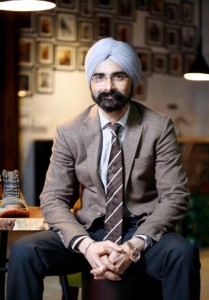 Consumers today demonstrate non-linear shopping behavior. A sizable lot of consumers like to research online, consult their peers for recommendations, look for product reviews online and then check the product in a store before making a purchase online. Then, they may want to pick up the product at a store nearby and also use the same store for after sales service or upgrades. Technically, together both digital and brick-and-mortar environments play a central role to build out a convenient experience for the customer.
Consumers today demonstrate non-linear shopping behavior. A sizable lot of consumers like to research online, consult their peers for recommendations, look for product reviews online and then check the product in a store before making a purchase online. Then, they may want to pick up the product at a store nearby and also use the same store for after sales service or upgrades. Technically, together both digital and brick-and-mortar environments play a central role to build out a convenient experience for the customer.
Online retail has made tremendous inroads with the customer base, as they give out good offers and heavy discounts. The convenience of shopping online is arguably the greatest benefit, as consumers can select a product and purchase it within minutes. However, it would not be correct to write off physical stores, even as online shopping sales continue to grow, more e-commerce players are proving that the physical space should not be ignored.People are still going to the store-it is accessible, people can see and feel product and try on merchandise. It’s a very visual experience that cannot be replicated through even the best online tools.In order to keep the excitement on for customers, retailers could add to this experience with consumer-facing technology that can help connect shoppers with employees and products while in the store. These advancements should bring an element of delight to the shopping experience.
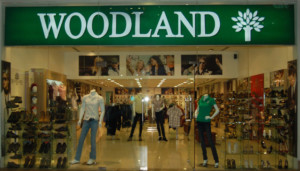
At Woodland, we have been selling through retail for a very long time and to adapt to the change we also have taken some measures foreseeing the challenges between online and offline stores. While Woodland is strengthening its physical presence in overseas markets, it is equally focused on online channel. At Woodland our focus is on the seamless integration to enrich the customer contact that can result in richer customer data – which can then be used to improve the overall shopping/brand experience.
You’ve been quoted as saying that Woodland targets urban youth looking out for adventure aged between 17-25 years who are students, college kids, professionals. But you had also rolled out a formals collection some time ago? Is there an extension in your positioning?
Woodland products are strong, meant for tough terrains and have a different style. The brand has its USP of being long-lasting and has been synonymous to adventure sports 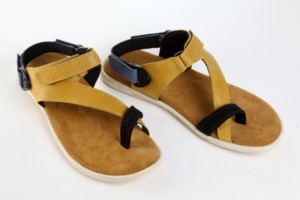 and outdoors for years now. Woodland being an outdoor and adventure brand is focused on shoes, apparels and accessories that cater to this segment of consumers. The brand’s DNA has always been Outdoors adventure sports and will always be a pioneer in outdoor adventure category.
and outdoors for years now. Woodland being an outdoor and adventure brand is focused on shoes, apparels and accessories that cater to this segment of consumers. The brand’s DNA has always been Outdoors adventure sports and will always be a pioneer in outdoor adventure category.
Today people want adventure all the time and want to connect with the outdoors on a daily basis. They go for biking, cycling and running on the streets. One such example 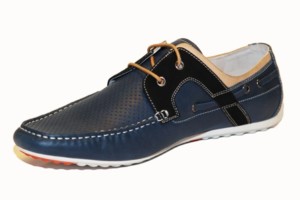 is Raahgiri, which shows exactly what people want from the city. We are meant to be used in outdoors but also can be used in the cities and people can find adventure in cities also. All our products can be used in different ways and are meant for youth (both men and women) who are students, college kids, and professionals.
is Raahgiri, which shows exactly what people want from the city. We are meant to be used in outdoors but also can be used in the cities and people can find adventure in cities also. All our products can be used in different ways and are meant for youth (both men and women) who are students, college kids, and professionals.
To cater to the luxury footwear segment, Aero Group, the parent company for Woodland, has launched a specialized formal-cum-fashion brand WOODS. The brand is renowned globally for its specialized handcrafted formal shoes and accessories for both men and women.
Woodland has 500+ stores across India (please confirm exact number and no. of cities present in). How is your expansion into tier II and III markets going? Can you share some insights on consumer behaviour in these markets?
Wood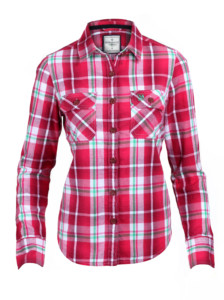 land has a strong presence across the country through various touch points. We currently have 600 plus company owned stores and a strong presence spanning over 240 cities. For the next couple of years, we will continue to concentrate on strengthening our base in Tier II, III cities and this year, we plan to add to the existing network by entering into 12 new cities.
land has a strong presence across the country through various touch points. We currently have 600 plus company owned stores and a strong presence spanning over 240 cities. For the next couple of years, we will continue to concentrate on strengthening our base in Tier II, III cities and this year, we plan to add to the existing network by entering into 12 new cities.
Today consumers in tier II and III cities are aware about the domestic and international brands across categories. The market has evolved and there is a lot of potential. Today, youth are going for trek and having fun, earlier it was not the case. I think it is the right time to be available for consumers through various touch points.
Given the exit of Timberland from India, do you believe the adventure/outdoor footwear category in India is yet to achieve critical mass?
The exit was a setback to the outdoor category because the market is huge and we are witnessing consistent growth of more than 20 percent every year.The category is growing 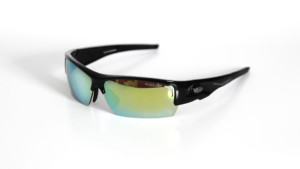 by itself and we need more brands, as Woodland alone cannot grow it. Today, a lot of consumers are youngsters who go out trekking. They know what they want to buy, they know what technology should be used in the products, they are aware of all the international and Indian brands.
by itself and we need more brands, as Woodland alone cannot grow it. Today, a lot of consumers are youngsters who go out trekking. They know what they want to buy, they know what technology should be used in the products, they are aware of all the international and Indian brands.
The psychology of the customer is not the only thing that has changed. Demographically speaking, the customer base has expanded: Earlier we used to think our TG is the 17-25 year-old, but today, we see 13 year olds wanting to go out for treks and adventure sports. The relevance is there. We see our sales growing year on year.
Technology has led to sharp changes in shopping behaviour, especially in the past 5 years? How would you sum up these shifts and what do they indicate for your growth strategy?
The Indian retail sector has seen major transformations over the last decade through technology and e-commerce thus, putting the industry on a growth trajectory over the past few years. The changes in the consumer behavior and market dynamics have helped us design a strategy to grow our online business, enhance our in-store customer experience, and leverage our multi-channel capabilities or deliver to our customers’ great advice, service, and convenience in the channel they want to be served. Technology has helped us to gain an insight into the kind of customers who are coming to us and what they are look into. Most customer feedback also comes from our social media platform- Facebook, Twitter as we have a lot of fans following us on such platforms.
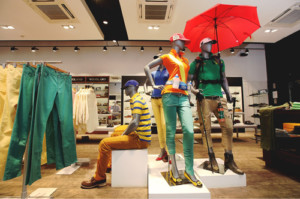
Please elaborate on any new line extensions or new categories being envisaged in the near future.
Woodland as a brand likes to explore new terrain and we try not to depend much on a singular domain – be it geography or product range.We are looking to gradually expand our presence in tech-based adventure gear and outdoor footwear business,as it is the fastest-growing arena among youth in India and abroad, except Europe and the US.
Please share details on your online commerce strategy, including presence on online marketplaces, and your own omni-channel initiatives. How much does e-commerce contribute to your total sales? Are there any targets for the next fiscal?
At Woodland, to optimize multi-channel retail options, we connect with customers across each and every touch point, and provide the resources necessary for them to research and shop for products through multiple channels. While the company’s portal and other e-commerce sites equally contribute to the e-commerce sales revenues, Woodland has a different se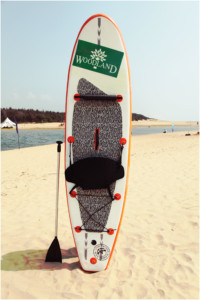 t of merchandise for the e-commerce companies and this is exclusively available in those sites. The e-commerce company may also offer discounts on these products, but it will not cannibalize our offline sales, as they are not available in the retail stores. We constantly work on new designs and collections that would be available exclusively online.
t of merchandise for the e-commerce companies and this is exclusively available in those sites. The e-commerce company may also offer discounts on these products, but it will not cannibalize our offline sales, as they are not available in the retail stores. We constantly work on new designs and collections that would be available exclusively online.
E-commerce currently accounts for around 15 per cent of Woodland’s sales. But online sales are growing at a faster rate and we expect it to grow to 40 per cent in three to four years.We plan to concentrate more on a seamless approach through all available shopping channels, i.e. mobile internet devices, computers, bricks-and-mortar, television, radio, direct mail, catalog, in-store experience and so on.
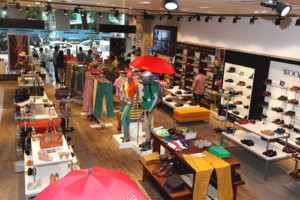
In the 25 years of Woodland’s presence in India, what would you consider have been the biggest learnings and insights?
Indian market is very typical other than our original market like Canada, Europe and Asia. People here are very particular about maintaining a balance between price and value. They value products with the quality, which makes them one of the most difficult customers to cater to. I think that was the biggest challenge because selling a product in India is like fulfilling each and every expectation of the customers. We have learnt that it is important to reach out to your customers regularly and consistent feedback is what works for the brand. It’s essential to understand their requirements and customize as per their needs.Effective turnaround time for consumer management is also imperative when building customer relationships.
Can you share turnover details (from both EBOs and MBOs separately), in the last fiscal, along with sales projections for current fiscal ?
On the company financials, the firm has been growing consistently and we have clocked revenues of Rs 1,300 crore in the last FY.
Finally, what would you advise established traditional retailers in this category? How should they adapt to stay successful?
One thing that every company should learn in the retail category is to understand their customers. One needs to spend time in understanding the Indian customer. India is not one single market, and in case of shoes and apparels, it differs widely. Nuances in tastes, colors and habits have to be understood over the years. No brand can understand the market and develop products in a short term; it needs to have patience and perseverance.



